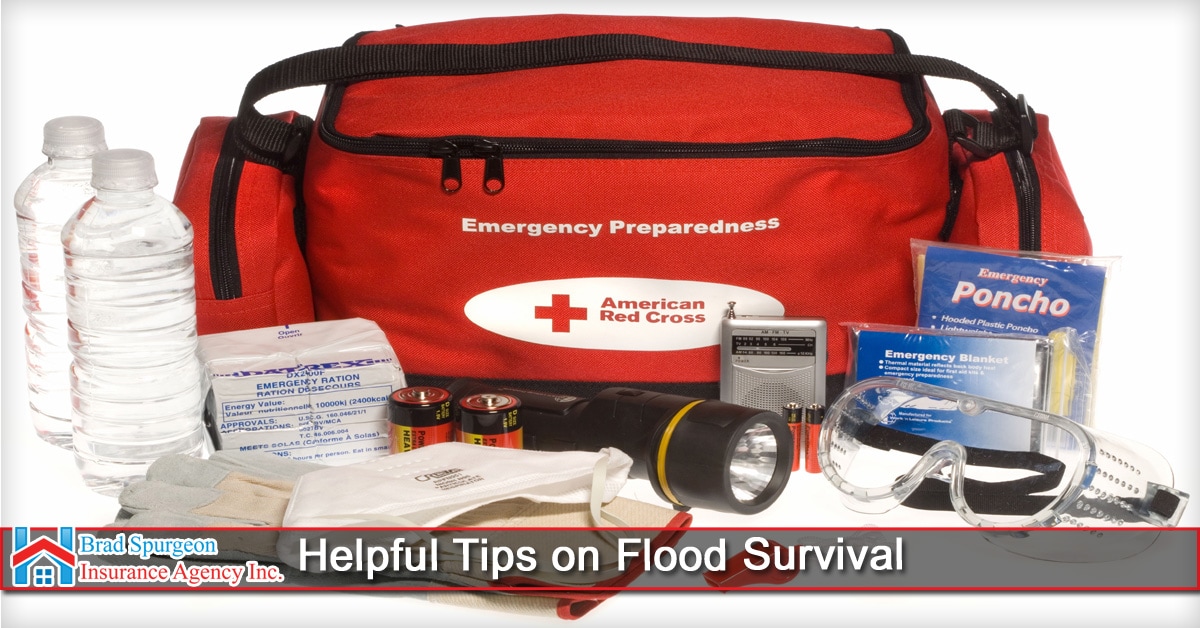- Determine which areas are known to flood suddenly such as drainage channels, canyons, and streams. Bear in mind that flash floods can happen in these areas with or without notice of rain clouds or heavy rainfall.
- Know that flash flooding may occur anytime. If that is a possibility, move to a higher ground immediately. It’s best not to wait for instructions to move.
- Prepare an emergency kit with at least three days of supplies for everyone in the household. This includes water, flashlight, battery-operated radio, non-perishable food, extra batteries, medication, first aid kit, personal hygiene and sanitation, multi-purpose tools, and copies of certain important documents.
- Listen to the news for updates in your area. Understand the difference between a flood watch and a flood warning. A “watch” means there is a possibility that a flood may happen in your area. Whereas, “warning” means a flood is already happening or will happen soon. Prepare to evacuate anytime.
Evacuating Before or During a Flood
- When you’re warned of a flood in your area, evacuate. Go to a higher ground and stay there until it’s safe.
- If there’s still enough time, secure your home. Move important things to an upper floor or higher ground. Bring outdoor furniture inside your home.
- Make sure to turn off utilities at the main switches or valves when instructed to do so. Electrical appliances should be disconnected. Never touch electrical equipment if you’re wet or standing in water.
- Never walk through moving water. But if you have to walk in water, make sure the water isn’t moving. Have a stick handy to check the firmness of the ground.
- If you stumble upon a flowing stream and the water is already above your ankles, turn around and go the other way.
- Make sure that you keep your children out of the water.
Driving During a Flood
- Keep in mind that approximately six inches of water can already reach the bottom of your cars causing it to lose control. A foot of water will cause vehicles to float. Two feet of moving water can carry cars away, including pick-up trucks and SUVs.
- If you come upon a flooded road, turn around and go the other way.
- Never drive into flooded areas. If flood waters rise quickly around your car, abandon the vehicle and go to higher ground if it is safe to do so.
After the Flood
- Don’t return home unless the authorities have deemed it safe.
- Listen for updates about whether it’s safe to drink the community’s water supply already.
- Avoid floodwaters as it may be contaminated by raw sewage, oil, or gasoline. It may also be electrically charged from downed power lines.
- Stay away from downed power lines. Report them to the power company immediately.
- Be mindful of areas where the flood has receded. These roads may collapse under the weight of a car.
- Be extra cautious when entering buildings. There may be damage to its foundation, causing it to collapse.
- Keep out of buildings surrounded by floodwaters.
- Have your septic tanks, pits, cesspools, and leaching systems checked and repaired as soon as possible. They can cause serious health problems.
- Remember to clean and disinfect anything that got wet.
After it’s safe to go back home, call your insurer immediately about your flood insurance claim. Doing so will also give you an idea on what to do and where to start as you begin checking for damages and cleaning up your home.
Brad Spurgeon Insurance Agency offers flood insurance products that protect you against property loss from flooding. We have a list of insurance carriers that will offer you the best policies that suit your needs at a competitive price. Get quoted by us for free and discuss your options with us. Call us at (409) 945-4746 or visit us today.

